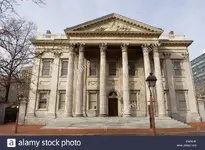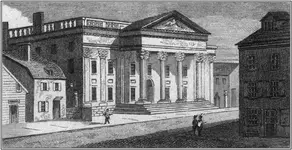Dave Rishar
Silver Member
It has been said…The Perfect Murder is one where the Victim accomplishes it himself.
This is not a “Theory” or a “Hypothesis” but more of a “Speculation”.
I have one of my own. I think that I've mentioned it here before, but I may not have. In any case, read on.
The deaths of Robert Restall and the 3 others who died on Oak Island, Tuesday August 17[SUP]th[/SUP], 1965, have always troubled me.
They troubled me as well, inasmuch the death of anyone that I don't know troubles me. However, the very first time that I read about the circumstances under which they'd died, I immediately knew what had probably killed them. I was so sure of this that I didn't bother to research it any further, as it was a textbook example. But given what you've presented here, I'm even more sure of it now.
"Robert Restall Sr. was checking a shaft along the beach where he and his son had been working on previously, when out of nowhere, a poisonous gas started to evade the shaft and he lost consciousness and fell into the watery shaft. His oldest son Robert Restall Jr. saw his father fall into the shaft and he ran after him and jumped into the shaft to try and save him. A couple of nearby diggers for the Restall family saw Robert Jr. jump into the hole and they also ran after to help. They all jumped into the hole and were killed from the poisonous gas inside the hole."
When I read about someone suddenly losing consciousness in an enclosed space (particularly one full of organic matter in an anaerobic environment), my first thought is hydrogen sulfide. As this theory checks all of the boxes with minimal speculation, I'm still inclined to think this way. I would be very surprised if it was something other than hydrogen sulfide that caused this.
The Official conclusion from the Canadian Government was that these deaths were caused from Carbon Monoxide and later this conclusion was changed to Methane Gas produced from Apples dropping into the Tunnels.
It may have been that the original Autopsy showed some residual trace of Cyanide that could only be equated to the seeds in apples which contain…Cyanide.
I'd be very interested in reading those autopsy reports. The fact that they initially assumed that it was carbon monoxide is telling, as most of the indicators would have been the same. I'm not sure how they wound up with methane, thus my interest.
Those of you that are curious can read about it here: https://en.wikipedia.org/wiki/Hydrogen_sulfide Note that hydrogen sulfide deaths have been confused with carbon monoxide deaths in the past. I only know about it because of my occupation. Most people have never heard of it, and as it's a very uncommon way to die, it's probably not the first thing that a coroner would suspect. (I would think that a competent coroner would at least look into this when someone suddenly died in a wet hole in the ground, but who knows?) The important takeaway is that in sufficient concentrations, it incapacitates very rapidly. It can be smelled at lower concentrations, but at higher concentrations it quickly removes the ability to smell things - very quickly. I would not at all be surprised if Robert Restall Sr's last words were, "Damn it stinks down here. Okay, getting better now." *splash*
As an aside, for those of us that have to deal with this as part of our work, we receive very specific training on it. When someone enters an enclosed space and collapses, you do not attempt a rescue, as they're likely already dead and you will be too if you go in there. Instead, you summon emergency services and they make the recovery with appropriate equipment. One dead person is preferable to two or three dead people. Just something to keep in mind if you ever find yourself in this situation. Enclosed spaces are dangerous.






